Tweet I’ll hold my hands up and admit I’m not a digital reader at all- there are a few web-comics which I love and keep up with and that’s it. I’ve tried reading comics on an e-reader but as idealistic and romanticised and dinosaurish as it may sound, the experience is simply too impersonal for [...]
Viewing: Blog Posts Tagged with: nonfiction Monday, Most Recent at Top [Help]
Results 1 - 25 of 30
Blog: PW -The Beat (Login to Add to MyJacketFlap)
JacketFlap tags: Small Presses, Comics, Webcomics, Breaking News, Digital, buying, Farel Dalrymple, Indie Comics, Digital Comics, newsprint, Study Group Comics, Add a tag
Blog: Steve Draws Stuff (Login to Add to MyJacketFlap)
JacketFlap tags: options, chapter, sons, buying, book, illustrations, novak, reference, steven, fathers, forts, two, canonbridge, Add a tag
Well, the book is out. If you haven't yet ordered yourself a copy there are a LOT of buying options available.
Amazon UK is carrying it now, and it can be gotten through independent bookstores everywhere, with more to come.
CLICK HERE FOR A FULL LIST!
Some people that have already gotten their hands on the copy started sending me pictures of themselves with the book. Granted, it's a little unexpected, but I'm digging it!
Below is a picture sent to me by my pal Erik.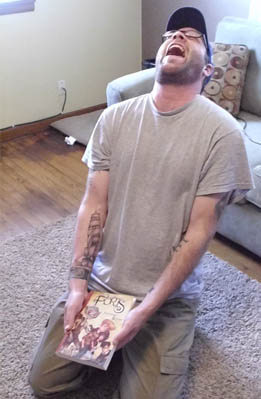
Cool pose, no?
Yes it is.
So cool in fact that I used it for reference when sketching up a chapter illustration for book 2 (which is hopefully due by the end of the year). 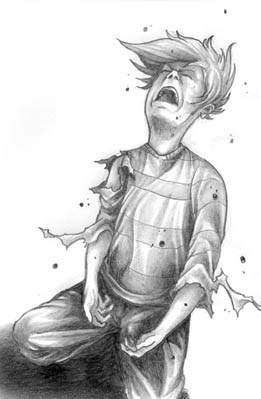
Will Erik be flattered? A little weirded out maybe? Call his lawyer and see if he has a case? All of the above along with an glass or warm milk to help him sleep at night?
Only time will tell I suppose.
GET YOUR COPY TODAY!
Steve
Blog: Lori Calabrese Writes! (Login to Add to MyJacketFlap)
JacketFlap tags: NonFiction Monday, Reading List, Reading List, NonFiction Monday, Add a tag
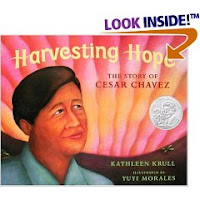 Harvesting Hope: The Story of Cesar Chavez
Harvesting Hope: The Story of Cesar Chavez by Kathleen Krull (author), Yuyi Morales (illustrator); (Harcourt, 2003)
Follow Cesar Chavez's life in this beautifully told story by Kathleen Krull. At the age of 10, Cesar Chavez lived a happy life at his grandparent's home surrounded by family, but a drought forced his family to move to California where they became migrant workers. They suffered awful working conditions, so as Chavez grew up, he became determined to improve the working conditions of migrant farmworkers in California. Chavez organized a 340-mile march to protest the working conditions that produced the first farmworkers' contract. This story is told in such a way that it will appeal to younger readers. You learn what Chavez's life was like as a boy and grow with him along the way - an inspiring tale of somebody who changed the world.
Kathleen Krull is the author of many fabulous nonfiction titles. Visit her website and check out her other titles.
I'm really excited to read her upcoming book that comes out this summer titled 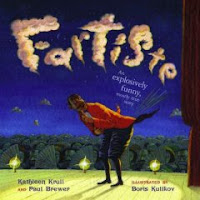
Fartiste. One day a baker with butter and yeast, and the next—voila! –he was JOE, the Fartiste. The Fartiste doesn’t sing, he doesn’t dance, and he doesn’t act. But that doesn’t stop him from taking the stage at Paris’s famed Moulin Rouge, where he performs his much-loved act for celebrities and royalty with the funniest talent of all – Joe is the man who has perfected the art of the fart. Gotta love it!
Other titles by Krull. . .
Wilma Unlimited: How Wilma Rudolph Became the World's Fastest Woman
Isaac Newton: Giants of Science (Giants of Science (Viking))
Lives of the Presidents: Fame, Shame (and What the Neighbors Thought)
Leonardo Da Vinci: Giants of Science #1 (Giants of Science (Viking))
Sigmund Freud: Giants of Science #3 (Giants of Science (Viking))
You might also enjoy her article, 'Writing Biographies for Inquiring Minds' from Booklist.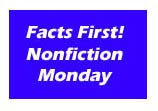
Don't forget to check out Anastasia Suen's Picture Book of the Day blog for the Nonfiction Monday Round-up.
Blog: A Year of Reading (Login to Add to MyJacketFlap)
JacketFlap tags: nonfiction monday, nonfiction monday, Add a tag
As part of our writing workshop, we are doing a study of Literary Nonfiction. When I think about what that means, I think it is quality nonfiction writing --the nonfiction writing that has the qualities of good writing. It is different from encyclopedia or traditional report writing.
Knowing that this is a big focus for our grade level standards, I have been trying to pick up some good mentor texts--nonfiction books that students can learn from. I am amazed by how many great nonfiction books are out there these days. These are some of the newer ones  I've picked up.
I've picked up.
POOP: A Natural History of the Unmentionable by Nicola Davies
The version of this that I purchased is a very tiny book (3" X 5") which makes it quite fun! The illustrations are amusing and the writing has a great deal of humor embedded in it. A topic that kids love to read about and they can certainly learn from the casualness of the writing.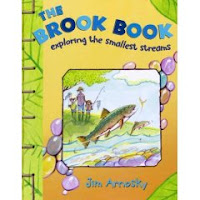
THE BROOK BOOK: EXPLORING SMALL STREAMS by Jim Arnosky is full of great information about brooks. The illustrations are soft and the colors work. Many features of nonfiction text (labels, question headings, etc.) are embedded throughout and there is variety in the page layouts. The language is perfect when looking at quality nonfiction writing. One page says, "As a brook tumbles and runs downhill, the moving water shapes te land it flows over." Every line seems packed with information and the writing is quality nonfiction. The author's note lets readers know that the book is set up to help you get the most out of a visit to a local brook!
A DICTIO NARY OF DANCE by Liz Murphy is a fun dictionary of dance vocabulary. Each letter of the alphabet is accompanied by a dance specific word such as improvisation or kick. The pronunciation and definition are included. The illustrations give readers a visual to further explain the word.
NARY OF DANCE by Liz Murphy is a fun dictionary of dance vocabulary. Each letter of the alphabet is accompanied by a dance specific word such as improvisation or kick. The pronunciation and definition are included. The illustrations give readers a visual to further explain the word.
I GET WET by Vicki Cobb is an older book (2002) that I just discovered. I purchased this one because of the writing and the page layouts. Cobb often places the words in a wave coming out of a faucet or something similar. The key is that the writing in those spaces is well-written. My students often have fun with font and word placement but forget about the quality of writing when doing so. This will show them how to tie those things together.
FROGS by Nic Bishop
The photographs in this book were what drew me to it in the first place. The writing is as spectacular as the photos. The book is packed with information and organized in paragraphs about different things. One paragraph lead says, "Some people are confused about the difference between a frog and a toad, but you do not have to be." Love that! A great index and glossary are found at the end of this book.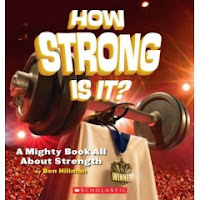
HOW STRONG IS IT? by Ben Hillman
I heard about this book from Karen at Literate Lives. HOW BIG IS IT? by the same author is a class favorite. This is a great second book. The illustrations are fascinating--showing strong things like lasers, sharks, and wood. The photos draw you into the text and the text goes on to tell you the information you want to know. The writing is tight--one column per photo. It is organized by paragraphs and well written. Each page can be studied by nonfiction writers and they will learn lots about organization, choice of details, and more.
HOORAY FOR INVENTORS! by Marcia Williams
I would consider this book to be a graphic novel of sorts, but not really. Each page stands alone and has the feel of a comic book. Some boxes hold isolated information while other spreads connect a story about a famous inventor. Facts are found in every white space on the page so there is lots to look at and discover. 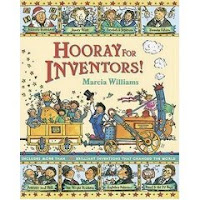 The organization is an interesting component. The index helps readers find the information they are looking for.
The organization is an interesting component. The index helps readers find the information they are looking for.
Nonfiction Monday roundup is at Picture Book of the Day.
Blog: Seven Impossible Things Before Breakfast (Login to Add to MyJacketFlap)
JacketFlap tags: Nonfiction Monday, Nonfiction Monday, Add a tag
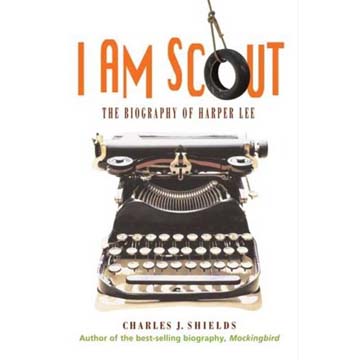 I used to read To Kill a Mockingbird annually. Though I gave up that habit, without meaning to, I was always impressed by the fact that I found something new to love about the novel each year I read it. And, of course, I’m not alone. Harper Lee is the favorite one-hit wonder of a lot of readers.
I used to read To Kill a Mockingbird annually. Though I gave up that habit, without meaning to, I was always impressed by the fact that I found something new to love about the novel each year I read it. And, of course, I’m not alone. Harper Lee is the favorite one-hit wonder of a lot of readers.
In 2006, Henry Holt released the first-ever biography of Lee — who is, arguably, contemporary literature’s most elusive author — entitled Mockingbird: A Portrait of Harper Lee. An unauthorized biography, written by Charles Shields, it was met with mixed reviews. While School Library Journal wrote that “{s}tudents and curious fans alike will find material here to further their understanding of her work and life,” Publishers Weekly wrote, “{m}uch of this first full-length biography of Lee is filled with inconsequential anecdotes focusing on the people around her, while the subject remains stubbornly out of focus.” And in her 2006 Washington Post review, Meghan O’Rourke wrote:
Blog: The Well-Read Child (Login to Add to MyJacketFlap)
JacketFlap tags: art, bob raczka, millbrook press, nonfiction Monday, the art of freedom, nonfiction Monday, bob raczka, the art of freedom, millbrook press, Add a tag
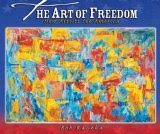 It's Nonfiction Monday! Visit the roundup at Picture Book of the Day!
It's Nonfiction Monday! Visit the roundup at Picture Book of the Day!
Reading level: Ages 4-8
Library Binding: 32 pages
Publisher: Millbrook Press
When I was young, I had little exposure or interest in art. As an adult, I'm surrounded by museums that feature art of various types, and when I visit these museums, I truly appreciate the art but wish I knew more about the history, the technique, and the artists themselves. I should have taken an art history course in college and maybe I'll still do it one of these days. If you have a child who loves art or if you'd like to expose your child to more art, Bob Raczka's Art Adventures series is a great way to introduce art without overwhelming him/her. Through paintings, portraits, photgraphs, sculpture, and easy-to-read text, Bob Raczka introduces some of the world's most famous works of art and encourages young readers to develop an appreciation for it.
A new book in the series, The Art of Freedom: How Artists See America, defines America through the eyes of famous artists. The book features 18 statements answering the question, "What is America?" Each statement is accompanied by a famous work of art that visually represents the statement. Underneath each work of art is the name of the artist, the name of the piece, and the location of where the piece is displayed. For example, beside the statement, "America is an idea," is John Trumbell's painting The Declaration of Independence, 4 July 1776.
Ansel Adams' Desert Road accompanies the statement, "America is the open road," and Georgia O'Keefe's Brooklyn Bridge is opposite the page that says, "America is man-made marvels."
The background of each page alternates between red and blue with faded stars at the top. The art and colors, combined with the inspiring statements, give the book a very patriotic feel. I can even imagine this book being a great gift choice to US military members as a way to honor their service.
Raczka did an exceptional job of choosing art to compliment the text and makes these famous works of art accessible to young readers without intimidating or overwhelming them, and I am eager to read the other books in the series.
Blog: Biblio File (Login to Add to MyJacketFlap)
JacketFlap tags: Oliver August, Polly Evans, Oliver August, Polly Evans, nonfiction monday, China, Adult, Nonfiction, nonfiction monday, Add a tag
Well, I'm resurfacing here. It's a really busy semester for me, homework wise. Plus, work's been crazy. Also, I've started randomly embroidering tea towels, and wonder of wonders, I've actually had a bit of a social life lately.
Anyway, I'm back now. I not only haven't been blogging, but I've been out of the whole blogosphere for a few weeks. I've probably missed some massive bit of earth-shattering news. Ah well.
In the meantime, I've jacked my back again. So, I'm in a lot of pain. At least this time I can still walk. (Last time I messed it up, I was in a wheelchair for two days.)
I thought I'd made my return debut on Nonfiction Monday with 2 adult books about China.
This is a fascinating account of the lawlessness and decadence that goes along with the New China.
Obstensibly, it's about one reporter's quest to uncover the true story of Lai Changxing--a tycoon that was the Xiamen's darling and the poster boy for China's economic prosperity until he ended up fleeing to Canada on corruption charges.
But, it's more about August's observations of a society in flux and the effect that change has on all manner of people. August focus's on the seamy underbelly that such prosperity brings-- and all those who enjoy it.
Highly accessible, I recommend it for anyone who wants a hard look at modern China as well as well thought out explanations of why things are progressing the way they are. I also recommend it for anyone who likes stories with bandits and pretty ladies and corrupt government officials.
Fried Eggs with Chopsticks: One Woman's Hilarious Adventure into a Country and a Culture Not Her Own Polly Evans
Polly Evans had a really crappy trip to China. Unfortunately, she doesn't realize this. Her "humor" seems to be making cranky, ignorant remarks about things she doesn't understand at all. Her explanation of various aspects of Chinese culture and history are superficially explained that where they're not wrong, they're also rarely right.
Her favorite parts of her trip seem to include
1. Idyllic villages that haven't seen any modernization. (Isn't poverty quaint?!)
2. Four star Western hotels
3. Starbucks
Everything else is described as a "hellhole." Seriously. I also love her rants on the Americanization of the world, followed by how much she can't wait to get to the Sheraton.
At points, she seems to realize that she's unnaturally grumpy and cranky. She chalks it up, understandably, to loneliness and the fact that traveling alone in China, when you don't speak Chinese and aren't a Sinophile is incredibly hard and physically, emotionally, and mentally exhausting. A lot of her comments are what I felt on my lowest days when I lived in China, but...
She's a travel writer. That's what she does. If she can't handle traveling alone in a foreign environment without proclaiming the landscape hellish and the people poisonous, maybe she should get a nice desk job.
Blog: Book Moot (Login to Add to MyJacketFlap)
JacketFlap tags: chemistry, Nonfiction Monday, Nonfiction Monday, chemistry, Add a tag


The Periodic Table: elements with style created by Basher, written by Adrian Dingle, Kingfisher; 2007
What a fresh and original look at the periodic table! The book is compact in size, and gives a brief synopsis, including most the data from the periodic table such as the symbol, atomic number and weight, its standard state, color and classification.
The book is organized by periodic table group, the graphic at the top of the page shows each element's location on the table. The elements introduce themselves with a sense of humor and share facts about their appearance and uses.
Zinc, symbol Zn, says, "Here to protect and serve, I'm more useful than you'd zinc! I'm a very sociable element that's always happy to mix in with other metals."
The illustrations that represent each element make the book. Silicon is a computer chip/centipede while Aluminum is a stylized airplane. They evoke Japanese anime characters and the poster of the periodic table bound into the back of the book remids me of the Pokemon poster that used to hang in my entling's bedroom. I found the drawings utterly compelling.
The book invites casual reading as well as cover to cover absorption.
Blog: Fiona Bayrock: Books and 'Rocks (Login to Add to MyJacketFlap)
JacketFlap tags: Nonfiction Monday, Nonfiction writing, Nonfiction, Nonfiction Monday, Nonfiction writing, Add a tag
_
I wrote a meaty little essay for today's Nonfiction Monday blog entry, but it turned out to be substantial enough that I've decided to offer it to a few writing magazines instead. Hey, one of the secrets of the working writer is to always keep the market in mind, right?
So, in lieu of said essay, I thought I'd point you to an article about Catherine Thimmesh, author of Team Moon: How 400,000 People Landed Apollo 11 on the Moon (Houghton Mifflin, 2006). This is an amazing book that earned the 2007 Sibert Informational Book Award for the most distinguished informational book for children published in 2006. "Ironically, when Thimmesh went to the library every week as a kid with her mother, nonfiction was never on her reading list. "I didn't like it at all," she said. That's why the books she writes are written and illustrated in a way to give enjoyment to the reader. "I don't write books that you would do a book report from. Although they are factual, and filled with information, I want more than anything for kids to be entertained by them."
"Ironically, when Thimmesh went to the library every week as a kid with her mother, nonfiction was never on her reading list. "I didn't like it at all," she said. That's why the books she writes are written and illustrated in a way to give enjoyment to the reader. "I don't write books that you would do a book report from. Although they are factual, and filled with information, I want more than anything for kids to be entertained by them."
_______--"A Spark and a Twitch" in Twin Cities Daily Planet
The nonfiction I grew up with was dry and intended solely to teach. Thank goodness nonfiction has morphed since then. Books such as Thimmesh's Team Moon now present kids with fascinating, true stories that can be enjoyed for the good dramatic stories they are, not because they contain information that should be taught to the next generation.
Yes, the books I write are "factual and filled with information", but I don't write to teach. I write to share the stories that have fascinated me. I want my books to be books that kids pick up because they want to, not because they have to for a school assignment.
"Oh, coo-uhl, look at this!" Is there a sweeter phrase to hear from a child in the nonfiction section of the library?
The rest of the Twin Cities Daily Planet article about Catherine Thimmesh appears here. Catherine Thimmesh's website is here.
The rest of the Nonfiction Monday links can be found here.
Happy Nonfiction Monday!
_
Blog: Check It Out (Login to Add to MyJacketFlap)
JacketFlap tags: Nonfiction Monday, Family Library Night, Kidlitosphere, Family Library Night, School, Nonfiction Monday, Add a tag
It is “Nonfiction Monday.” My nonfiction is all about the nonfiction writing I am doing for the National Boards for Professional Teaching Standards. After March 25, 2008, which is a month from now, I will have my box sent off and will only have the test prep to do for April or May.
I spent the weekend revising the entry entitled, “Fostering an Appreciation for Literature”. This entry is actually cleverly disguised as a reading lesson. I must show a connection to literature, demonstrate that students are inferring, have a curriculum aspect connected to the classroom and show it on a 15 minute tape. A 2 minute video pan of the library with narration is also required. Yesterday I was I school for more than 2 hours taping the pan. But it is completed. Hooray.
I am feeling a bit like the princess in Rumpelstiltskin these days. Two of four entries are near completion but there remains more straw to spin into gold. My last two entries are “integrating technology” and “collaboration with another teacher”. I have been collaborating with a second grade teacher. It has been great to tie in the science of clouds with poetry. The teacher said we could continue with the unit on animals later this spring. This is where I feel so fortunate that my school is small enough that I can work with interested staff beyond the weekly 30 minute requirement.
The prompt at One Deep Breath was “ink”. My haiku for that reflects my life over the last few weeks:
keys click, thoughts race
printer spits another draft
out, revision
entry completed
more straw in the mind waits to
become golden words
Have a great Monday. If you are interested in terrific nonfiction books, visit Picture Book of the Day.
Happy Reading.
MsMac
Authored by msmac. Hosted by Edublogs.
Blog: World of Words (Login to Add to MyJacketFlap)
JacketFlap tags: Nonfiction Monday, picture books, nonfiction, science, Nonfiction Monday, Add a tag

Blog: Lori Calabrese Writes! (Login to Add to MyJacketFlap)
JacketFlap tags: NonFiction Monday, Reading List, Reading List, NonFiction Monday, Add a tag
 It's a Hummingbird's Life
It's a Hummingbird's Life by Irene Kelly. (Holiday House, 2003)
Irene Kelly gives all the information that will appeal to someone about the ruby-throated hummingbird. What is a hummingbird's life like? It’s busy, busy, busy! From morning to night, spring to winter, these tiny birds work nonstop. Did you know that a hummingbird's wings beat at the rate of 3000 times per minute? Find more fun facts like that and admire the illustrations in pen-and-ink and watercolor that add dazzling color to the book. The text is thoughtfully designed to fly and flutter around the page just like the hummingbird.
Be sure to visit Irene Kelly's website to see more of her books.
Other books on hummingbirds. . .
The Secret Lives of Hummingbirds
The World of the Hummingbird Don't forget to check out Anastasia Suen's picture book of the day blog for the nonfiction Monday round-up where you can search through other great nonfiction titles.
Don't forget to check out Anastasia Suen's picture book of the day blog for the nonfiction Monday round-up where you can search through other great nonfiction titles.
Blog: laurasalas (Login to Add to MyJacketFlap)
JacketFlap tags: nonfiction monday, online classes, nonfiction monday, writing children's nonfiction for the ed, online classes, writing children's nonfiction for the ed, Add a tag
I'm now taking registration for the next session of my online class: Writing Children's Nonfiction Books for the Educational Market. In this class, you will learn about the educational market and how it differs from the trade market. You will learn how to put together an introductory packet to send to publishers. We'll work on the various components of that packet so that by the end of the month, you have packets ready to pop in the mail. You'll also learn how to deal with some of the practical issues of educational writers: research, dealing with editors, finding expert consultants, etc. Then, once the class is over, you can join (if you like) the "post-grad" blog community The Guppy Pond (members only), where you can continue to chat and get feedback from other writers hoping to or starting to write for the educational market.
My first session, back in January, filled up and had a waiting list. This session is partially filled already with people from that waiting list, but there are still some spots open.
This online class will run from March 10 - April 4, with new material and homework daily, Monday through Friday. You can read complete class info here, and you can read feedback from students in the first session here. Then, if you think this class is a good fit for you, you can register here.
Hope to work with some of you!
Anastasia Suen has the Nonfiction Monday wrap-up.
Blog: Book Moot (Login to Add to MyJacketFlap)
JacketFlap tags: Nonfiction Monday, space the final frontier, space the final frontier, Nonfiction, Nonfiction Monday, Add a tag
Planets, Stars, and Galaxies: a visual encyclopedia of our Universe by David A. Aguilar, National Geographic, 2007
David Aguilar describes the planets of our solar system as well as dark matter, neutron stars, nebula, and many other phenomena of space in this book.
What makes this book different from others on the subject, are the glowing illustrations that Aguilar created from NASA and telescope photographs . The photos are enhanced and photoshopped to offer a "you are there" presence to the reader. What would it feel like to be in the middle of the Kuiper Belt? Well, pages 62 and 63 give us an idea. Imaginative space ships tour planets and space suited explorers stand on the surface of one of Jupiter's moons.
Aguilar fills the text with factual information. He explains how a star burns in a graphic that depicts the collision of two protons and the release of energy that is starlight. The location of supernova, nebula and other objects are marked in constellation maps when they are visible through binoculars.
The author has projected reader into the galaxy, traveling exploring and experiencing the wonders of the universe. We live in a time when the Space Shuttle program seems routine and low Earth orbit is the best we can do. The book could fire the imagination of kids who have seen the spectacular images of the space telescopes and now think, "been there-done that." Chapters, "Are we Alone?" and "Dreams of Tomorrow" ponder what is "alien life" and ideas for the future of space engineering.
If you believe the program How William Shatner changed the world, (and I do) my generation was inspired to "make it so" by Star Trek. This book fires the imagination and could also inspire a young person today to look skyward.
Blog: World of Words (Login to Add to MyJacketFlap)
JacketFlap tags: Nonfiction Monday, Picture Book Biographies, picture books, Brian Selznick, Picture Book Biographies, Nonfiction Monday, Add a tag
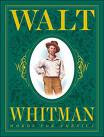
Walt Whitman: Words for America
by Barbara Kerley
illustrated by Brian Selznick
Scholastic Press, 2004
This picture book biography take the best of two things: Kerley's poetic prose that describes Walt Whitman and Selznick's illustrations that illuminate the time period and people.
Walt Whitman wasn't just a famous poet we know about today, but a kind, giving man who loved words and people. He worked for a newspaper and even began his own paper. He loved American, but was heartbroken when the Civil War broke out and tore apart the nation. He spend years with the dying and injured soldiers, trying to give them some last comfort. He cared less about himself and more about the boys who had given so much for their country.
But Walt also loved America, and his poetry reflected that love of his country. This book tells who Walt Whitman was as a person, not just as a poet. But the background that Kerley gives paints a picture of how Whitman's love of country so influenced his poetry.
The back of the book includes an author's note, illustrator's note, information about Walt Whitman and Abraham Lincoln, and reprints several of his Whitman's poems.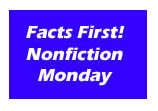
Blog: Lori Calabrese Writes! (Login to Add to MyJacketFlap)
JacketFlap tags: NonFiction Monday, Reading List, Reading List, NonFiction Monday, Add a tag
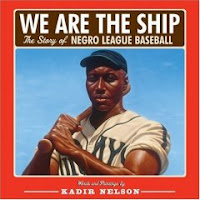
We Are the Ship: The Story of Negro League Baseball by Kadir Nelson. (Jump at the Sun/ Hyperion, January 2008)
Illustrator (almost 20 illustrated books in print) and first time author, Kadir Nelson brings us this magnificent book on the story of Negro League Baseball. As long as there has been baseball in America, there have been African-American ballplayers. Rube Foster was the founder of the Negro National League and said of his men, "We are the ship: all else the sea." On February 20, 1920, Rube Foster called together the owners of African-American baseball teams and the Negro National League was formed. This book is jam packed with information and facts about the men who played the sport, the hardships that they faced, including the low pay and the dangers of playing in the South, and also, the great plays, crazy rules, and the stars that broke out. The book climaxes with Jackie Robinson making it into Major League Baseball, thus the end of the Negro League.
Hank Aaron writes the foreword and says he's grateful for Kadir's fresh approach. We should ALL be grateful for Kadir's fresh approach, and his desire to share the story of a group of men that changed the sport of baseball and made it what it is today.
This book is unlike any other and each illustration makes you feel as though you're in the heart of the action. Kadir has been drawing since the age of three, and painting since the age of ten and that's evident in his amazing illustrations. We Are the Ship: The Story of Negro League Baseball is already a NY Times Best Seller and should certainly be nominated as an award-winner!
Visit Kadir Nelson's website. It's worth a visit to see his amazing gallery and if you're interested, Nelson offers limited edition prints from this book.
The Negro League's Baseball Museum in Kansas City offers an exhibit of Nelson's artwork through April 13, 2008.
Visit the NPR website for an interesting interview with Kadir Nelson. He states that this book took him nearly eight years to complete and it offers an excerpt from the book. 
Don't forget to check out Anastasia Suen's picture book of the day blog for Nonfiction Monday. Find out about other great nonfiction titles like 'We Are the Ship.'
Blog: Kate's Book Blog (Login to Add to MyJacketFlap)
JacketFlap tags: nonfiction monday, interviews, benedict arnold, jim murphy, nonfiction monday, jim murphy, pairing nonfiction & historical fiction, benedict arnold, pairing nonfiction & historical fiction, Add a tag

If you've spent any time around middle school kids, you know they devour Jim Murphy's works of nonfiction. Murphy has won two Newbery Honors for his books The Great Fire and An American Plague: The True and Terrifying Story of the Yellow Fever Epidemic of 1793. His latest book, The Real Benedict Arnold, was brought to my attention this fall by a Vermont librarian who purchased it as a non-fiction companion to go along with my middle grade historical novel Spitfire, about a young girl who disguises herself as a boy to join Arnold's fleet on Lake Champlain during the American Revolution. 



Jim was kind enough to take time out from his writing to answer some questions for blog readers.
Thanks so much for joining us, Jim! Your most well-known works of non-fiction for middle grade readers have focused on disasters — fire, the blizzard, the yellow fever epidemic. What drew you to write a book about Benedict Arnold?
Yes, I’ve done a lot of books that focus on one or another form of disaster. In fact, my friends jokingly call me the Master of Disaster. I try to write nonfiction that reads like a good “you are there” story and a fire or blizzard or whatever has the built feature of having a beginning, middle, and an end. What’s more, these are often dramatic events that people who survive write about in vivid and dramatic prose. Combine the event and the people and the result has the potential to be a book that allows readers to experience a part of our history in an active, involving way.
So you’re right that The Real Benedict Arnold was a bit of a departure for me. I was drawn to him because most books about the American Revolution or about Arnold simply paint him with the traitor brush and never try it discover why he turned against the Cause. In addition, very few give him proper credit for his military abilities. He was, in my opinion, the best field general that the colonies had and deserves a great deal of credit for the ultimate American victory.
Where did your research for this book take you? Were there many surprises along the way?
Researching The Real Benedict Arnold was a nightmare. I ended just about every day with a massive headache and the feeling that I’d only scratched the surface. But after six or so years the path to the finished began to look clearer. Here’s why it proved to be so difficult. I found that many, if not most of the negative stories about Benedict surfaced after he’d turned traitor. I wondered how many were invented by people who wanted to distance themselves from Benedict or saw it as an opportune moment to get even. I also wanted to find out the truth about the negative stories that existed before he went over the British. So every event in his life had to be evaluated as if it was a potential crime scene and my job was to trace every story (positive and negative) back to its origins and then evaluate it as carefully as I could. The biggest surprise for me was how many of these stories were completely fabricated and false, and then passed along as fact by succeeding generations of historians.
You’ve written both non-fiction and historical fiction. How does your writing process differ with those two genres?
Research for both my nonfiction and historical fiction is pretty much the same. I’m a bit obsessive about assembling facts and trying to “see” what the person or event was really like. The writing process itself is different. In nonfiction I can include only information that I’ve been able to verify with at least two reliable sources. This means stopping frequently to discover, for instance, what the weather was like every day during Benedict’s march with his troops through the Maine wilderness. With my historical fiction, the emphasis is on the characters – what are their conflicts or aspirations, what problems get in their way and how to they overcome them, etc. Still, I try to create characters that are historically accurate. This means shying away from giving them obviously modern opinions and ideas (say about the environment or war in general).
Many teachers are using your books in the classroom, particularly as companion books alongside historical novels. I know that my school has a class set of An American Plague that we use with Laurie Halse Anderson’s Fever, and I’ve heard from another school that’s planning to use your new Arnold book as a non-fiction companion to go along with my own historical novel, Spitfire. As an author, how do you feel about the trend of fiction & non-fiction being paired in the classroom?
On a purely selfish level, I love to have my nonfiction books paired with someone else’s historical fiction counterpart. In general, kids will much more readily seek out historical fiction than nonfiction (historical fiction comes with a promise of action and drama, while nonfiction seems like tons of facts). So using one of my nonfiction books and historical fiction together in a classroom allows more readers to get a taste for the way I write history and might even convince some that it might even be fun to read.
I like the pairing of nonfiction and historical fiction for another reason. Reading historical fiction allows readers to see the past through a character’s eyes and, hopefully, might prompt a series of opinions or questions. Readers can then use the nonfiction book to check out their ideas or get a fuller understanding of our past.
Are there other works of historical fiction that you like to recommend as companions to your non-fiction titles? Have you heard about novels or picture books that teachers like to use along with Blizzard and The Great Fire?
This is a great question for which I have no answer. I tend to muddle along day to day struggling to get words on a page, so I haven’t devoted much thought to additional pairings. And most teachers I’ve spoken with have spoken about the pairings mentioned above, but not offered new ones. Maybe the notion is so new that most of us don’t think about it in a regular way. Besides, I have a feeling most of your readers a better qualified to make such pairings. Or maybe someone out there should write an article about it for SLJ….
(How about it blog readers? Any thoughts on novels or picture books that would work well as pairings for Murphy's other books? Betsy Bird, doesn't that sound like a blog post in the making?)
Readers always love a sneak preview, Jim. Can you tell us what you’re working on now?
What am I working on? Well, I’ve written a nonfiction book about the Battle of Antietam called A Savage Thunder. It’s a look at how Robert E. Lee and George McClellan managed their armies both before, during, and after the battle, but the story line is driven by scores of firsthand accounts of the fighting. It will be published by Simon & Schuster in spring, 2009.
I have two other nonfiction books in the works. One is entitled Truce: The Day the Soldiers Refused to Fight (and is about the famous Christmas truce in 1914). The other as yet untitled book follows George Washington from his disastrous performance in the Battle of Long Island to his miraculous victory at Trenton. Neither book has an official pub date, but (if someone somewhere smiles upon me) might appear in 2009.
Finally, my wife, Alison Blank, and I are writing a history of tuberculosis (which is much more interesting and scary than it sounds).
Jim, thanks so much for joining us for Nonfiction Monday! We'll be looking for those new titles in 2009.
Blog: Fiona Bayrock: Books and 'Rocks (Login to Add to MyJacketFlap)
JacketFlap tags: Nonfiction Monday, Book faves, Cybils, Nonfiction, Science, Book faves, Nonfiction Monday, Add a tag
_
Bugs Up Close
by Diane Swanson
Photographs by Paul Davidson
Kids Can Press, 2007
Category: Nonfiction Picture Book
Here in Canada, Diane Swanson is somewhat of an icon in children's nonfiction. We've never met, but I'm a big fan and longtime admirer. Known for her clear, engaging, conversational style, she delivers here in spades, covering everything 'buggy' from eyes and spiracles to reproduction and defense.
Each spread is illustrated in glorious oversized macro-photography. Open Bugs Up Close to any page and you will, indeed, be up close with a bug of some kind. How does a 12-inch katydid or a 9-inch grasshopper grab you? I guarantee you won't get to the end of this book without uttering a few "Wow"s sparked by Davidson's crisp images.
The design of this book is brilliant. Many children's science books are compartmentalized into bite-size blurbs in boxes, starbursts, and tiny sections. I'm so pleased the book designers didn't do that here, instead opting for a simple clean design. The images are so spectacular, you don't need to dish things out in small servings to keep the reader's attention. Text, images, design -- all in tune.
When I was a child, photo-illustration was my favourite. Real images of real things in real places tapped a truth and invoked a fascination about the world that drawings and paintings couldn't quite muster. This is a book the nine-year-old me would have lovingly dog-eared in no time. And, well, actually, those corners are already starting to look a little bendy. Old habits die hard.
Bugs Up Close was nominated in the Nonfiction Picture Book category of the Cybils Award.
Blog: A Year of Reading (Login to Add to MyJacketFlap)
JacketFlap tags: nonfiction monday, Add a tag
I'm going to cheat a bit today. The nonfiction part of my post is not a book. Instead, I give you some links for nonfiction reading you might do before or after you finish Margaret Peterson Haddix's book Uprising: Three Young Women Caught in the Fire That Changed America.
Cornell University's Online Exhibit on The Triangle Factory Fire
Wikipedia entry on The Triangle Factory Fire
History of the Union Movement in America
Library of Congress Immigration Site
Scholastic Site on Women's Suffrage
Wikipedia -- What else happened in 1911?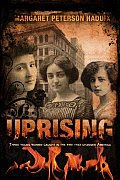 Uprising: Three Young Women Caught in the Fire That Changed America
Uprising: Three Young Women Caught in the Fire That Changed America
by Margaret Peterson Haddix
Simon and Schuster, 2007
This book should be required reading for all women and girls -- to remind us or teach us how far we've come in the struggle for equal rights.
This book should be required reading for anyone whose ancestors were immigrants in America -- to remind us or teach us about the sacrifices that were made to make our cities and our country what it is today.
This book should be required reading for anyone whose association or union is currently involved in negotiations -- to remind us or to teach us the importance of the rights of the worker.
Haddix has written a story that is very accessible. Framed in the beginning and the end by young women who are questioning a survivor of the Triangle Shirtwaist Factory Fire, the story is told from three points of view -- Yetta, a Jewish girl who is a Russian immigrant, Bella, an Italian immigrant, and Jane, a high society girl. These three stories become entwined in very believable ways, and the ending, while tragic, provides hope, both for the future in the story and for our modern day future.
Blog: laurasalas (Login to Add to MyJacketFlap)
JacketFlap tags: assessment, nonfiction monday, Add a tag
I'm writing a couple of assessment passages for a company right now, and I thought I'd share just a little of what's involved (without listing any details because of confidentiality agreements).
Some writers think writing passages for assessment companies just involves writing a story or poem or article at the correct grade level. But there's more to it than that. It's true that some companies do buy already published pieces in the form they were published in. The writer gets paid and does no more work. Sweet!
But most passages are commissioned for the testing materials, and writing them involves specific skills. The most important one, and the one most difficult to achieve, is writing in a way that lets items (multiple choice questions) be written about that passage. It's kind of the same idea as when you work on picture book manuscripts and "leave room for the illustrator." In passages, you must "leave information for the item writer."
For instance, I'm working on a poem for a particular grade level for a particular state. So the testing company has sent me a copy of the language arts standards for that state (and companies do this about half the time, and I love it). I need to write this poem in a way that 12 items can be asked from it. That's a lot of questions about one poem (or very short article or story).
But I can use the standards as I create the poem. One standard says that students will be able to use prefixes and suffixes to define words. So as I revise my poem, I make sure to include two to three words that use common prefixes and suffixes, like un-, dis-, and -ly. Another standard says students will be able to identify the setting of a literary passage. So I make sure I have references to time of day, time of year, and general place in my poem.
I don't try to meet every single language arts standard in this one poem. But any standard that I can work in, within reason, I do. I want the item writer to have plenty to work with.
If you pursue passage-writing work, make sure to give your passages plenty of depth, so that the item writer and the editor will be happy to read your work!
Blog: Fiona Bayrock: Books and 'Rocks (Login to Add to MyJacketFlap)
JacketFlap tags: Nonfiction Monday, Gotta love it, Science, Gotta love it, Nonfiction Monday, Add a tag
_
It's Nonfiction Monday!
Filed under: Things That Make Me Say, "Hmm...'"Science is not a little thing, a narrow field: it encompasses or confronts all that ever was, is, or shall be, the whole bag of tricks, from a universe 13 billion light years across, to the subatomic world.
How curious then, that the science book remains a sub-genre, occupying a set of shelves somewhere in non-fiction, usually near the back of the shop; and how curious that it remains separate from literature, as if science writing was not the same as good writing; and as if facts about the world were somehow less thrilling than fictions about it. Novelists observe and describe. But so do naturalists. Poets celebrate, but so do physicists. Historians explain, but so do chemists."
--Tim Radford in his 2005 article in The Guardian,
in which he goes on to name ten science books
everyone should own.
Anastasia has the Nonfiction Monday roundup of links on her blog. (she'll post it later this afternoon)
_
Blog: The Well-Read Child (Login to Add to MyJacketFlap)
JacketFlap tags: maple tree press, lizann flatt, scot ritchie, let's go, the story of getting from there to here, nonfiction, nonfiction Monday, Add a tag
Let's Go!: The Story of Getting from There to Here by Lizann Flatt, illustrated by Scot Ritchie
- Reading level: Ages 4-8
- Hardcover: 40 pages
- Publisher: Maple Tree Press (September 28, 2007)
Sometimes when traffic is heavily jammed on the highway during my morning commute, I take an alternate route to my Alexandria, VA office past George Washington's Mt. Vernon Estate. That leg of my route is only eight miles long and takes about 15 minutes, but I often wonder how long it took Washington to travel the same distance to do business in Alexandria. Certainly, the roads weren't paved and he didn't have a car. Did he encounter danger along the way? Who traveled with him? It makes me appreciate the fact that technology has enabled us for the most part to travel great distances quickly and safely. But it took quite a while and numerous inventions and innovations to get us where we are today.
Let's Go!: The Story of Getting from There to Here by Lizann Flatt and illustrated by Scot Ritchie tells the story of transportation from the Ice Age to today and beyond. Through the book we see the first travelers who migrate to North America on foot carrying backpacks and pulling their possessions in travois. We see European ships arriving carrying horses which become a major mode of transportation for quite some time. We see the invention of the steam engine, trains, streetcars, cars, and airplanes. How will we get around in the future? Flatt poses this question in the end. Will space travel become as common as automobile travel?
Without overwhelming readers in detail, Let's Go!: The Story of Getting from There to Here gives a fantastic introduction to all of the different modes of transportation. Readers get just enough information in the text to learn the basics about the featured mode of transportation.
For example:
"A noise up above! Machines in the air! Propeller planes skipped through the skies. Landing on lonely lakes like giant geese, bushplanes buzzed in with supplies and the mail. "
With details down to the type of clothing people wore during the time period, children will enjoy all of Scot Ritchie's vibrant illustrations that provide an even clearer picture of the different types of transportation and the people who used it. Children will also have fun finding the dog that appears in each spread.
The back of the book features a "Did You Know" section with even more information.Let's Go!: The Story of Getting from There to Here would be an excellent resource for a social studies classroom and a great book to spark discussion.
Other Blog Reviews:
Miss Rumphius Effect
Blog: Fiona Bayrock: Books and 'Rocks (Login to Add to MyJacketFlap)
JacketFlap tags: Publishing process, Nonfiction Monday, Nonfiction, Writing process, Publishing process, Nonfiction Monday, Add a tag
_
Happy Nonfiction Monday!
Interested in online resources about writing nonfiction for kids? Then this post is for you!
When I first started writing with a view to publication, I crawled the internet looking for online resources -- interviews, how-to articles, authors and editors talking about their processes, etc. It was time consuming, but I found some real gems, so it was worth it.
Surprisingly, no one had created a central list o'links for children's nonfiction writers, so once I had amassed a nice little URL collection, I organized it into categories and created one. "On Writing Nonfiction for Kids" was born. Since posting it on my website several years ago, the feedback I've received has been amazing. I continue to add URLs several times a year.
This weekend, I gave the list its annual checkup. As of yesterday, all links are live, dead links have been updated, and I've added ten, count 'em, TEN new links to articles on writing biographies and science, research, breaking in, and how-do-they-do-it peeks into the work of children's nonfiction writers such as Catherine Thimmesh, Tanya Lee Stone, Seymour Simon, Steve Jenkins, Peter Sis, and Gail Gibbons, as well as editors from Scholastic magazines and books. All of the new pieces are dated and marked with a NEW! to make them easy to find.
You can find the links here: On Writing Nonfiction for Kids
And if you know of any online resources you think I should add to the list, please let me know.
Do check out the Nonfiction Monday posts on other blogs. Anastasia Suen has the roundup of links on her blog.
_
Blog: World of Words (Login to Add to MyJacketFlap)
JacketFlap tags: nonfiction, kadir nelson, Nonfiction Monday, Add a tag
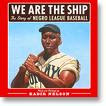 We Are the Ship: The Story of Negro League Baseball
We Are the Ship: The Story of Negro League BaseballWritten and Illustrated by Kadir Nelson
Jump at the Sun, 2008
I love baseball, and I really admire Kadir Nelson, so when these two wonderful entities came together as a book, I had to have it. This is Kadir Nelson’s first book that he has written and illustrated. He is a fabulous illustrator, and now we now he is a wonderful writer.
We Are the Ship is nonfiction, complete with footnotes, bibliography, and author’s note. It is meticulously researched and well written. It is the size of a normal picture book, but much lengthier and for an older audience. Hank Aaron wrote the foreword. The book is divided into chapters designated as “innings”. The illustrations are spread throughout the book. Some illustrations are only one page with text on the opposite page. Other illustrations are full spreads, and one illustration is a four page pull-out. ALL of the illustrations are stunning. This is Kadir Nelson at his very best.
The book is packed full of history and is told from an unnamed narrator, but the reader gets the feeling that you are sitting at the feet of a wise baseball historian telling you everything they know about the history of the Negro Leagues. It is told like the narrator was part of the Negro Leagues as he refers to “we” and “us” throughout the book. Nelson has managed to tell the history—the good and the bad—of life in the Negro Leagues. Despite the horrible way black players were treated, the segregation they faced, they still loved to play the game of baseball and felt privileged to have been given the opportunity.
I have high hopes for this book and for Kadir Nelson. I’m sure the Coretta Scott King committee will recognize this book, but I also hope that NCTE’s Orbis Pictus and ALA’s Sibert Committees will recognize this book too.

Blog: laurasalas (Login to Add to MyJacketFlap)
JacketFlap tags: packagers, nonfiction monday, leveled readers, author copies, Add a tag
I write a lot of work for hire books. Last year, I wrote about 15 of them, including 10 poetry collections and 4-5 nonfiction books, in addition to testing passages and other shorter projects.
I'm used to not having any control over how the book looks. I write the words, other people create the book using those words, and that's that. And I'm okay with that.
What I'm not okay with is the fact that sometimes, when writing for packagers, I don't even get to see the book!
The first thing I noticed is that, even when writing directly for publishers, if I'm writing leveled readers, I usually only get 2 copies of the book instead of the standard 10-20 copies I get for most other projects.
But then, as I've worked with several packagers over the past few years, I'm having trouble even getting 2 copies on some projects. I have two books in particular that I've been trying to track down. One of them, I've been told by the publisher (after the packager said she was having no luck getting any copies for me) that I'm welcome to order my own copies from customer service. After I check my contract to make sure it doesn't include any author copies, I guess I'll do that. I had searched the company's website and because my book was part of larger reading comprehension kit, I couldn't even find individual books listed.
The other one, I've emailed the packager repeatedly, and the project manager has just said she's getting no response from the publisher. It's a large publisher with many imprints, and, again, I can't find my book specifically. Again, I need to check my contract before I decide what to do next.
For packagers and for leveled readers (and I'm often doing leveled readers for packagers) I had gotten at least a couple of copies, even when it wasn't in the contract. But now that I'm seeing a pattern develop this past year, I'm going to make sure I carefully check the contract for author copies. And if it's not there, I'm going to try to negotiate it into the contract.
Not only does seeing the final book give me satisfaction (hopefully!), it also helps me evaluate the quality of products being put out by a certain publisher or packager. That helps me to decide whether I should write for that company again. I don't want to write a bunch of books that get produced so cheaply or poorly that I'm embarrassed to have my name on them!
So, the hunt continues for my two most recent orphan books, one about earthquakes and volcanoes, and another about homelessness. And I really don't have time to mess with it!
Have you guys encountered the same thing? Has anyone been able to put this into the contract?
Check out the Nonfiction Monday roundup later today at Anastasia Suen's blog!
View Next 4 Posts



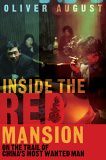
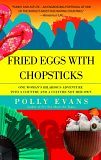



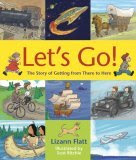
Study Group Comics is awesome, awesome stuff. Even though I vastly prefer reading comics on my iPad to anything else, I may get a physical copy of IWAL, too.
LOVED Pop Gun War, will have to give this a shot. Thanks for the heads-up Zainab!
Chris- agreed on Study Group. Don’t know if you read Julia Gfrorer’s Black is the Colour on there last year- that’s getting a print release from Fantagraphics later in the year. One of the best comics of 2012 for me.
Alex- no problem :)
bought! thanks for highlighting this.